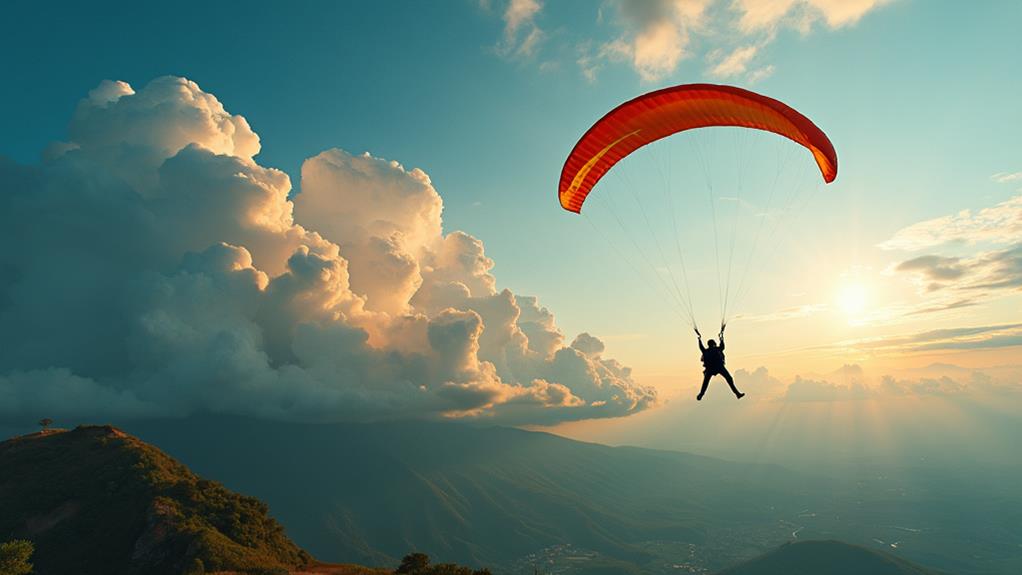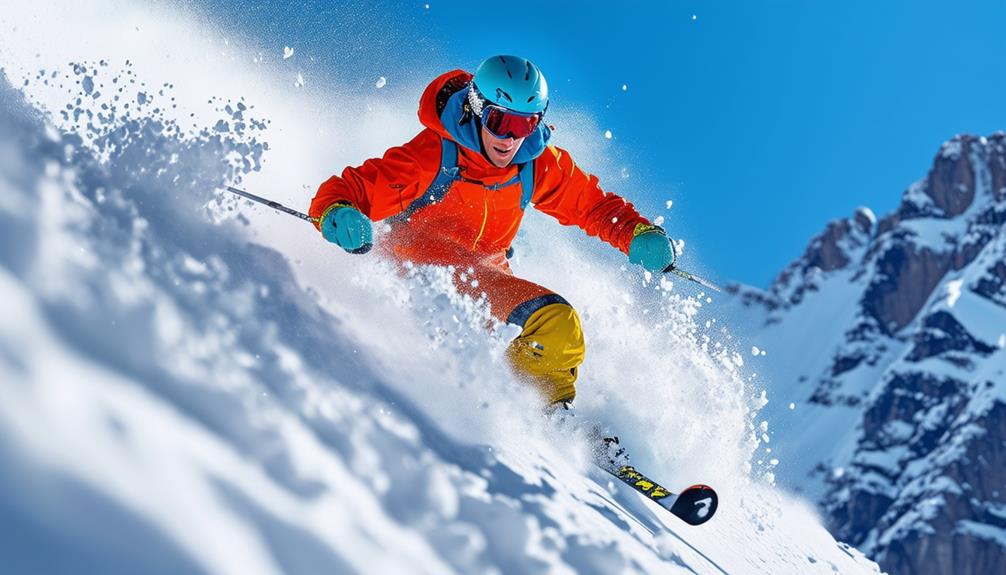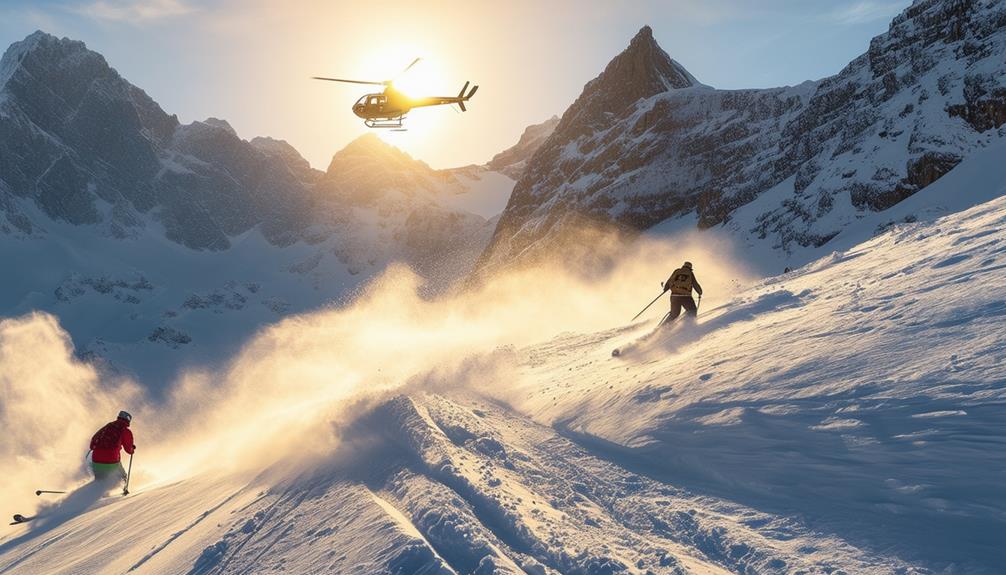Is Telemark Skiing Harder Than Alpine Skiing?

Telemark skiing is generally considered harder than alpine skiing. You'll face a steeper learning curve due to the unique telemark turn, which requires mastering a lunging position and constant weight shifting. The free-heel bindings and more flexible boots demand greater balance, coordination, and physical strength. You'll need to develop stronger leg muscles, core stability, and overall endurance to maintain proper form. While telemark skiing offers advantages in powder and backcountry terrain, it's more challenging on hard-packed surfaces. The specialized equipment and technique make it trickier to pick up, but many find the rewarding experience worth the extra effort. Discover why telemark enthusiasts embrace this challenging yet satisfying skiing style.
Equipment Differences
When it comes to equipment, telemark and alpine skiing diverge significantly. You'll notice the most obvious difference in the bindings. Alpine skis have fixed-heel bindings that lock your entire boot to the ski. In contrast, telemark bindings only attach at the toe, allowing your heel to lift freely. This unique binding is what enables the distinctive telemark turn.
The boots also differ considerably. Alpine boots are rigid and provide full ankle support, while telemark boots are more flexible, especially in the ankle area. This flexibility is crucial for executing proper telemark technique.
As for the skis themselves, modern telemark skis closely resemble alpine skis in shape and size. However, they're often slightly softer and more forgiving to accommodate the different turning style.
You'll also need different poles for telemark skiing. They're typically longer than alpine poles to help with balance during the lunging motion of telemark turns.
Lastly, telemark gear tends to be lighter overall, which can be an advantage for backcountry skiing but may feel less stable at high speeds on groomed runs.
Technique Comparison
The equipment differences between telemark and alpine skiing set the stage for their distinct techniques. In telemark skiing, you'll need to master the telemark turn, which involves dropping your back knee and lunging forward while your skis are parallel. This creates a graceful, fluid motion as you carve through the snow. You'll also need to learn how to switch your lead foot with each turn, requiring more balance and coordination than alpine skiing.
Alpine skiing, on the other hand, keeps both feet parallel and locked at the heel. You'll make turns by shifting your weight and using your edges to carve. The technique is generally considered easier to learn, as it doesn't require the constant weight shifting and knee-dropping of telemark skiing.
Telemark skiing demands more from your legs and core, as you're essentially doing lunges down the mountain. You'll need to develop strong quads, hamstrings, and glutes to maintain proper form. Alpine skiing still requires leg strength, but the fixed heel position provides more stability and less strain on your muscles. Ultimately, telemark skiing's technique is more complex and physically demanding, making it generally harder to master than alpine skiing.
Physical Demands

Telemark skiing's physical demands are significantly higher than those of alpine skiing. You'll find yourself engaging more muscle groups and expending more energy with each turn. The telemark stance requires a constant lunging position, which puts extra strain on your quadriceps, hamstrings, and glutes. Your core muscles will be working overtime to maintain balance and control throughout your runs.
The free-heel technique also demands more from your ankles and calves, as you'll need to lift your heel with each turn. This continuous motion can lead to quicker fatigue compared to alpine skiing. Additionally, you'll need to develop greater flexibility in your hips and lower back to execute proper telemark turns.
Here's a comparison of the physical demands between telemark and alpine skiing:
| Aspect | Telemark Skiing | Alpine Skiing |
|---|---|---|
| Leg Muscles | High engagement | Moderate engagement |
| Core Strength | Crucial | Important |
| Flexibility | Essential | Beneficial |
To excel in telemark skiing, you'll need to focus on building strength, endurance, and flexibility specifically tailored to the sport's unique demands. Regular off-season training and conditioning will help you prepare for the increased physical challenges you'll face on the slopes.
Learning Curve
Initially, you'll find that telemark skiing has a steeper learning curve compared to alpine skiing. The telemark turn, which involves dropping one knee and lifting the heel of your back foot, requires more coordination and balance than the parallel turns used in alpine skiing. You'll need to master this unique technique while simultaneously managing your speed and direction on the slopes.
As you progress, you'll face challenges in developing proper form and maintaining it consistently. Your muscles will need time to adapt to the new movement patterns, and you may experience fatigue more quickly than when alpine skiing. However, with practice, you'll gradually build the necessary strength and muscle memory.
Transitioning between different snow conditions and terrains can also be more demanding in telemark skiing. You'll need to adjust your technique for powder, hard-packed snow, and moguls, which may take longer to master than in alpine skiing. Additionally, learning to use telemark-specific equipment, such as free-heel bindings and specialized boots, adds another layer of complexity to the learning process. Despite these challenges, many skiers find the rewards of mastering telemark skiing well worth the effort.
Terrain Adaptability
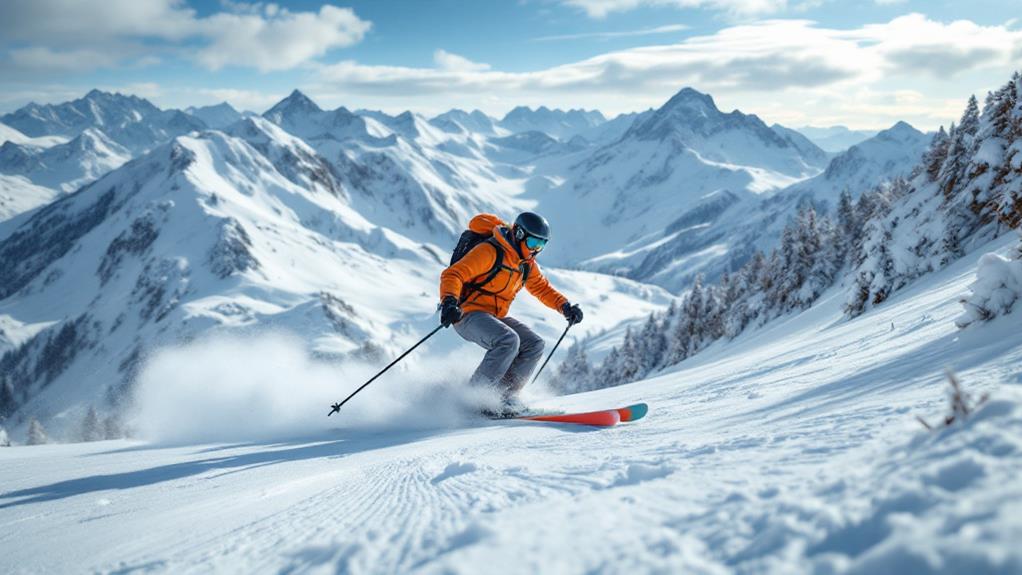
When it comes to terrain adaptability, telemark skiing offers unique advantages and challenges. You'll find that telemark skis can handle a wide variety of snow conditions and terrain types, from groomed slopes to deep powder and backcountry areas.
In powder, telemark skis excel due to their free-heel design, allowing you to "float" more easily on top of the snow. You'll have an easier time navigating through trees and tight spaces, as the telemark turn requires less lateral space than traditional alpine turns.
However, you might struggle more on icy or hard-packed surfaces compared to alpine skiing. The lack of a fixed heel can make it harder to maintain edge control in these conditions. You'll need to develop strong technique and balance to compensate for this.
Telemark skiing also shines in the backcountry. The ability to switch between a "free heel" for climbing and a "locked heel" for descending makes it versatile for touring. You can efficiently traverse flat sections and climb uphill without removing your skis, giving you access to more remote terrain.
Injury Risks
While terrain adaptability is a key consideration, safety is equally important when comparing telemark and alpine skiing. When it comes to injury risks, both styles have their own set of potential hazards.
In telemark skiing, you're more prone to knee injuries due to the free-heel binding system. The lunging motion puts extra stress on your knees, especially during turns. You'll also face an increased risk of ankle sprains and lower leg injuries because of the flexible boots. Resting is the first line of defense against shoulder aches and pains for these types of injuries.
Alpine skiing, on the other hand, offers more stability with fixed-heel bindings. However, you're not entirely safe from knee injuries, as sudden twists can still cause ACL tears. You'll also face a higher risk of upper body injuries, particularly to the shoulders and wrists, during falls. Applying ice can provide temporary relief for shoulder injuries.
Both styles can lead to head injuries if you're not wearing a helmet. Collisions with other skiers or objects are risks in both disciplines. You'll need to stay alert and follow safety guidelines regardless of your chosen style.
Ultimately, your injury risk depends on your skill level, equipment quality, and adherence to safety practices. Neither style is inherently safer, but understanding the specific risks can help you take appropriate precautions.
Skill Progression
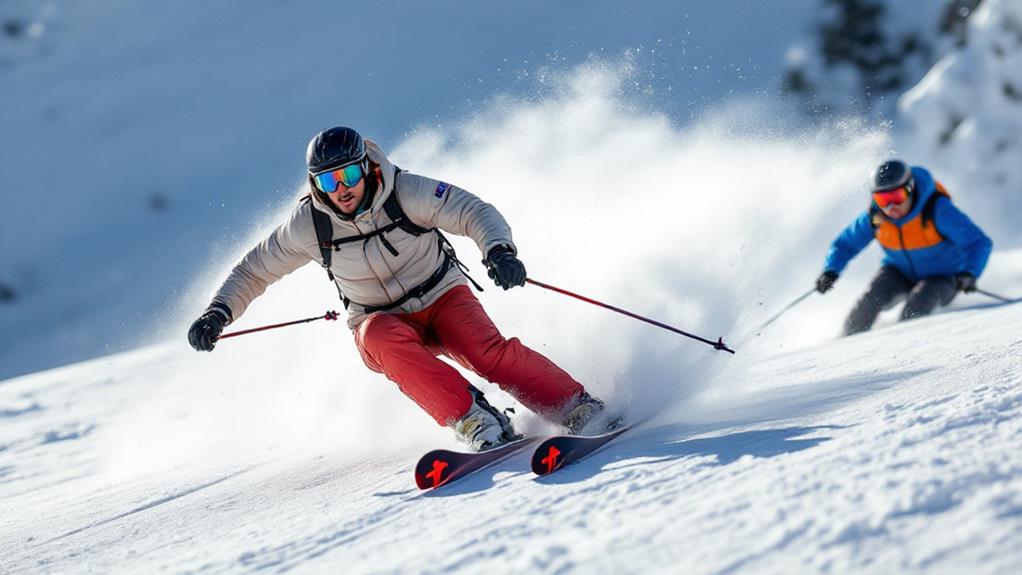
For both telemark and alpine skiing, skill progression follows distinct paths. In alpine skiing, you'll typically start with a wedge or "pizza" position, gradually moving to parallel turns as you gain confidence. You'll learn to control your speed, carve turns, and navigate varied terrain.
Telemark skiing presents a steeper learning curve. You'll begin by mastering the telemark stance, which involves a lunging position with one ski ahead of the other. This unique posture requires more balance and leg strength than alpine skiing. You'll need to learn the telemark turn, which combines elements of alpine skiing with a graceful, knee-dropping motion.
As you progress in telemark, you'll focus on smoothly transitioning between turns, maintaining proper form, and developing endurance for the more physically demanding technique. You'll also learn to adapt your stance for different snow conditions and terrains.
Both disciplines offer advanced techniques to master, such as skiing moguls, powder, and steeps. However, telemark skiing's more complex movements and stance mean you may progress more slowly compared to alpine skiing, particularly in the beginning stages.
Community and Culture
The communities surrounding telemark and alpine skiing have distinct cultures and atmospheres. When you step into the telemark world, you'll notice a more laid-back, free-spirited vibe. Telemarkers often pride themselves on their unique technique and connection to skiing's roots. You'll find a tight-knit group that's welcoming to newcomers and passionate about preserving their sport's heritage. Extreme sports provide a powerful avenue for youth to express unique identities and challenge societal norms.
Alpine skiing, on the other hand, has a larger, more diverse community. You'll encounter a wider range of skiers, from casual weekend warriors to competitive racers. The culture can be more performance-driven, with a focus on speed and technical precision. However, you'll still find plenty of camaraderie on the slopes and in the lodges.
Both communities share a love for the mountains and outdoor adventure. You'll find events, festivals, and competitions tailored to each discipline. Telemark gatherings often emphasize skill-sharing and social connections, while alpine events may lean towards competitive racing or freeride competitions. Ultimately, whether you choose telemark or alpine skiing, you'll be joining a passionate group of winter sports enthusiasts who embrace the joy of sliding on snow.

